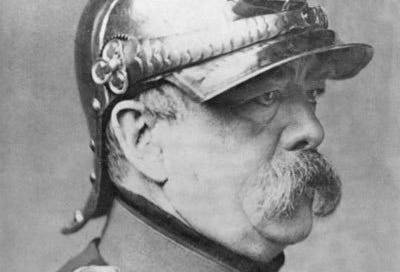Europe Breaks From Trump To Impose Costs On Russia: Analyzing the Impact and Rigor of the EU’s Latest Sanctions
Finally, we are seeing some independent action from Europe.
In the immediate aftermath of Trump’s call with Putin, both the European Union and the United Kingdom introduced new sanctions on Russia.
The EU has now unveiled its 17th package of sanctions and is already working on an 18th.
We’ll analyze the latest measures in detail below and discuss what further steps the EU and the U.S. can take in the short term to escalate pressure on Putin’s regime—pressure that might genuinely alter his calculus and bring him to the negotiating table.
But the broader picture reveals a striking divergence between U.S. and European positions.
Following Trump’s call with Putin, he held a debrief with European leaders and President Zelensky.
It quickly became clear that Trump had no intention of aligning with European efforts to intensify sanctions on Russia.
In a Senate hearing this week, Senator Marco Rubio faced criticism over the administration’s perceived softness toward Moscow.
Rubio defended the administration by emphasizing that no concessions had been made to Russia, and that no sanctions had been lifted.
He also mentioned that the U.S. is working to redirect air defense systems from Israel to Ukraine—a welcome development.
However, Rubio stopped short of committing to any new sanctions should Russia remain uncooperative and has even argued that imposing sanctions could drive Putin away from the negotiating table.
In this, Rubio is of course parroting his boss Trump.
Trump believes that applying pressure would scare Putin off entirely—an assessment that is profoundly misguided.
In reality, Putin is stringing Trump along, or as even Trump recently admitted ‘‘tapping him along”, deliberately delaying negotiations to buy time and maximize Russia’s territorial gains on the battlefield.
Putin has no incentive to negotiate in good faith.
He continues to make maximalist demands, including insisting that Ukraine recognize Russia’s illegal annexation of occupied territories. There is no evidence that he is willing to back down.
So why is Trump hesitant?
What exactly does Rubio mean when he says sanctions might scare Putin away from the “negotiating table”?
What table is he referring to?
We’ve already had the Istanbul talks, during which Russia threatened further annexations if Ukraine didn’t concede on occupied territories.
Were those talks truly productive?
They mostly served to reinforce Putin’s strategy of strategic delay while consolidating gains on the ground.
Meanwhile, there are growing signs that the U.S. may be stepping back from leadership on this issue.
Some reports suggest that Trump is open to allowing the Vatican or European partners to take the lead in mediation.
While this remains speculative, such a shift might not be entirely negative—provided the U.S. continues to supply weapons to Ukraine and arms sales to Europe remain uninterrupted.
If military support continues at a steady pace, a European-led diplomatic process could be workable.
The worst-case scenario, however, would be a return to early 2024 tactics—when intelligence sharing and military aid were used as leverage against Ukraine rather than as steadfast support.
As long as that is avoided—and U.S. weapons continue to flow to Ukraine and Europe—the evolving approach may be tolerable for Kyiv.
But one positive development is clear: Europe is no longer waiting for the U.S.
It is taking meaningful steps to raise the cost of Russia’s aggression.
We will now examine the specific measures introduced in the latest sanctions package and explore additional steps that both Europe and the U.S. could take to increase pressure on the Kremlin.
EU’s 17th Sanctions Package: Squeezing the Shadow Economy of Putin’s War Machine
On May 20, 2025, the EU formally adopted its 17th sanctions package—widely described as the most expansive since the war began.
While lacking headline-grabbing bank blacklists or a new oil cap (at least for now - perhaps in the 18th sanctions package.), this package marked a strategic shift: the transformation of sanctions into an enforcement-first doctrine.
The package targets Russia’s shadow oil fleet, its sanctions-evasion networks, and the industrial arteries of its war economy.
The message is clear: no loophole is too small, no intermediary too obscure, and no chemical compound too niche to escape scrutiny.
We shall unpack these measures by analyzing each key sphere: energy, defense industry, and finance industry.
Keep reading with a 7-day free trial
Subscribe to The Bismarck Cables to keep reading this post and get 7 days of free access to the full post archives.



